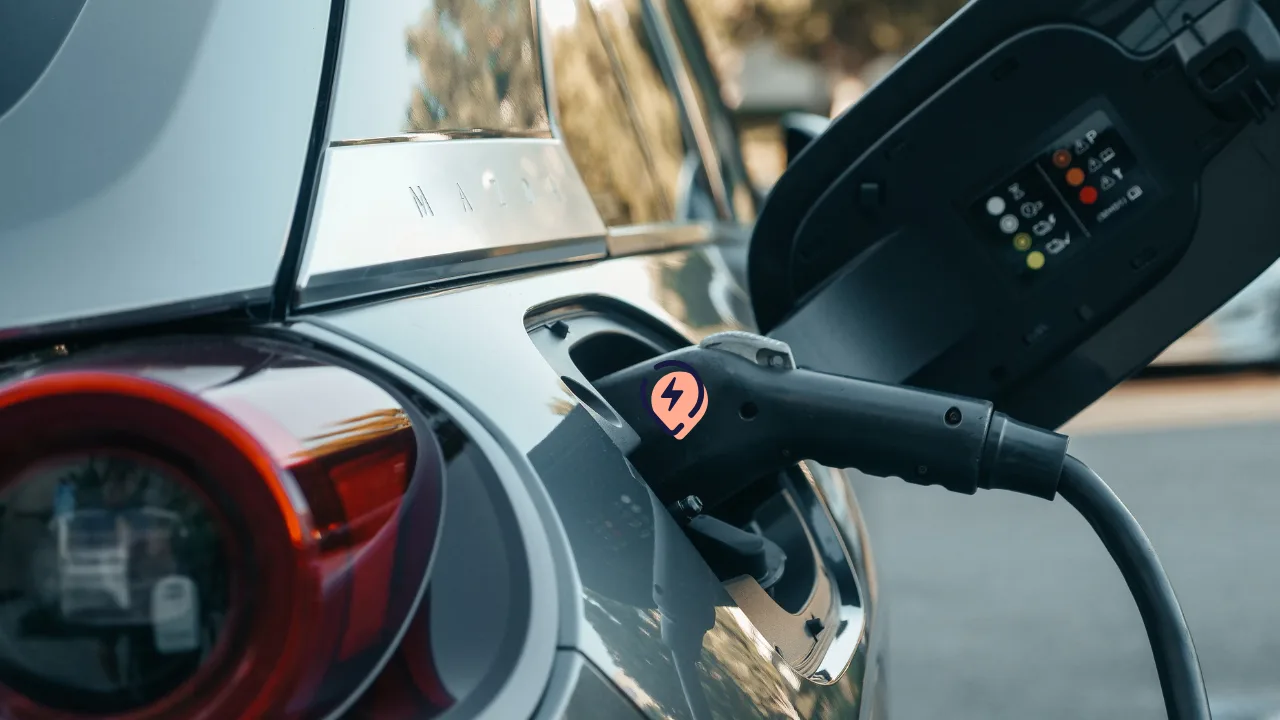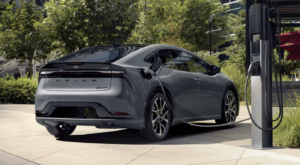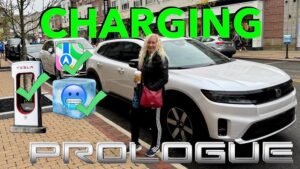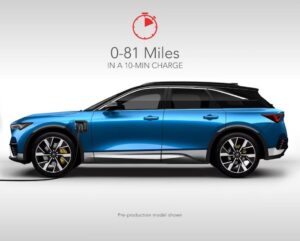As electric vehicles (EVs) gain traction, one of the most pressing questions for owners is charging compatibility. For Rivian owners, a common query is: Can my Rivian EV use a Tesla Supercharger? The answer is a resounding yes, but there are important details to understand. This blog post dives into how Rivian vehicles can leverage Tesla’s extensive Supercharger network, the requirements for charging, and what you need to know to make the process seamless.

Rivian and Tesla Supercharger Compatibility
Tesla’s Supercharger network is the largest and most reliable EV charging infrastructure in the world, boasting over 21,500 V3 and V4 Supercharger stalls in North America as of 2025. Historically, Tesla’s proprietary North American Charging Standard (NACS) plug limited Supercharger access to Tesla vehicles. However, in a major shift starting in 2024, Tesla opened its network to non-Tesla EVs, including Rivian, making it a game-changer for owners of Rivian’s R1T, R1S, and upcoming models.
Rivian has embraced this opportunity, enabling its vehicles to charge at Tesla Superchargers with minimal hassle. Whether you own a 2022–2025 Rivian model or are anticipating a 2026 model, here’s how you can tap into Tesla’s fast-charging network.
How Can Rivian EVs Charge at Tesla Superchargers?
Rivian vehicles use different charging ports depending on their model year, which affects how they connect to Tesla Superchargers:
-
For 2022–2025 Models (CCS1 Port): Rivian EVs from these model years are equipped with a Combined Charging System (CCS1) port. To charge at a Tesla Supercharger, you’ll need a Rivian-approved NACS-to-CCS adapter. Rivian provides this adapter free of charge (including shipping) to owners, a significant perk compared to other automakers charging $100–$250 for similar adapters. The adapter connects the Tesla Supercharger’s NACS cable to your Rivian’s CCS1 port, enabling safe and efficient charging. Using a non-Rivian-approved adapter is strongly discouraged, as it may cause compatibility issues, damage your vehicle, or void your warranty.
-
For 2026 and Newer Models (NACS Port): Starting in 2026, all new Rivian vehicles, including the R1T, R1S, R2, R3, and R3X, will come with built-in NACS ports as standard. This eliminates the need for an adapter, allowing you to plug directly into Tesla Superchargers. Rivian is one of the first automakers to fully adopt NACS, aligning with the industry’s shift toward this standard for future EV charging.
Which Tesla Superchargers Can Rivians Use?
Not all Tesla Superchargers are compatible with non-Tesla EVs like Rivian. Here’s what you need to know:
-
Compatible Chargers: Rivian vehicles can only charge at Tesla’s V3 and V4 Superchargers, which make up the majority of Tesla’s network (over 21,500 stalls in North America). These chargers support non-Tesla EVs and deliver high-speed DC fast charging.
-
Incompatible Chargers: Tesla’s older V2 Superchargers and Tesla Destination Chargers (Level 2) are not compatible with Rivian vehicles, even with an adapter. Always check compatibility before heading to a station.
You can easily locate compatible Superchargers using Rivian’s in-vehicle navigation system or the Rivian mobile app, which display Tesla V3 and V4 Superchargers alongside other charging options like Electrify America or ChargePoint stations.
How to Charge Your Rivian at a Tesla Supercharger
Charging your Rivian at a Tesla Supercharger is straightforward, thanks to Rivian’s integration with Tesla’s network and its user-friendly software. Here’s a step-by-step guide:
-
Find a Supercharger: Use Rivian’s in-vehicle navigation or mobile app to locate nearby V3 or V4 Tesla Superchargers. The navigation system filters for compatible chargers and shows real-time availability, including the number of open stalls. You can also plan routes with Supercharger stops for long-distance trips.
-
Set Up Your Adapter (2022–2025 Models): If you’re driving a 2022–2025 Rivian, ensure you have the Rivian-approved NACS-to-CCS adapter. In the Rivian app, go to “Charging Settings” and select “Enable NACS Adapter” to ensure Superchargers appear in your navigation. Keep the adapter stored in your vehicle for convenience.
-
Plug In and Charge: At the Supercharger, connect the adapter to your Rivian’s CCS1 port (if needed) and plug in the Tesla NACS cable. Rivian supports Tesla’s Plug and Charge feature, meaning charging starts automatically, and billing is handled seamlessly through your Rivian account. No Tesla app or separate account is required.
-
Monitor and Pay: Charging speeds depend on your Rivian model and the Supercharger’s output. For example, Rivian’s R1T and R1S can achieve up to 210 kW at optimal DC fast chargers, but at Tesla Superchargers, speeds may range from 150–250 kW due to adapter limitations. Expect to pay $0.41–$0.52 per kWh, depending on the location and time of day. A Tesla charging membership ($12.99/month) can lower costs at select stations, and you can enroll via the Rivian app.
Benefits of Using Tesla Superchargers for Rivian Owners
The ability to charge at Tesla Superchargers offers several advantages for Rivian owners:
-
Expanded Charging Options: With over 21,500 V3 and V4 Superchargers in North America, Rivian owners gain access to a vast, reliable network, especially in rural or underserved areas where other DC fast chargers may be scarce.
-
Seamless Integration: Rivian’s navigation and mobile app integrate Tesla Superchargers, making it easy to find and use them. The Plug and Charge feature simplifies the process, eliminating the need for manual payment or app-based authentication.
-
Free Adapter: Unlike other automakers, Rivian provides its NACS-to-CCS adapter at no cost, saving owners $100–$250 and ensuring compatibility without additional expense.
-
Road Trip Confidence: Tesla’s Supercharger network is designed for long-distance travel, with strategically placed stations along major highways. This makes road trips in a Rivian more convenient and stress-free.
Key Considerations for Rivian Owners
While charging at Tesla Superchargers is a major win, there are a few things to keep in mind:
-
Charging Costs: Tesla Supercharger rates typically range from $0.41–$0.52 per kWh, depending on location and peak hours. For comparison, a full charge for a Rivian R1S (135 kWh battery) could cost $55–$70. Check the Rivian app for real-time pricing to plan cost-effective charging stops.
-
Adapter Availability: Rivian began shipping free NACS-to-CCS adapters to owners in early 2025. If you haven’t received yours, contact Rivian customer service to confirm delivery. Supply may be limited initially due to high demand.
-
Charging Speeds: While Rivian vehicles can handle up to 210 kW at other DC fast chargers, Tesla Superchargers may deliver slightly lower speeds (150–250 kW) for non-Tesla EVs due to adapter and software limitations. Plan for slightly longer charging times compared to Electrify America or other CCS-based chargers.
-
Station Compatibility: Only V3 and V4 Superchargers are open to Rivian vehicles. Always verify compatibility through the Rivian app or Tesla’s interactive map to avoid arriving at a V2-only station.
Rivian’s Broader Charging Strategy
Beyond Tesla Superchargers, Rivian is expanding its own charging infrastructure. The Rivian Adventure Network (RAN) includes DC fast chargers designed for Rivian owners, with over 400 stations operational across the U.S. by mid-2025. These chargers support both CCS1 and, starting in 2026, NACS ports, offering speeds up to 200 kW. Rivian also partners with other networks like Electrify America and ChargePoint, ensuring owners have diverse charging options.
Additionally, Rivian is part of the Ionna charging coalition, alongside automakers like Mercedes-Benz, BMW, and Hyundai, which aims to deploy 30,000 DC fast chargers across North America by 2030. These chargers will support both NACS and CCS1, further enhancing Rivian’s charging ecosystem.
Conclusion
Rivian owners can confidently use Tesla’s V3 and V4 Superchargers to charge their EVs, thanks to Rivian’s proactive adoption of Tesla’s NACS standard. For 2022–2025 models, a free Rivian-approved NACS-to-CCS adapter makes charging possible, while 2026 and newer models will feature built-in NACS ports for plug-and-play convenience. With seamless integration into Rivian’s navigation and app, along with the Plug and Charge feature, using Tesla Superchargers is both easy and efficient.
As Rivian continues to expand its Adventure Network and collaborate on broader charging initiatives like Ionna, the future of EV charging looks bright for Rivian owners. Whether you’re embarking on a cross-country adventure or just need a quick top-up, Tesla’s Supercharger network provides Rivian drivers with unparalleled flexibility and reliability. For the latest updates on adapter availability or to explore Rivian’s charging options, visit Rivian’s website or contact their customer support team.


